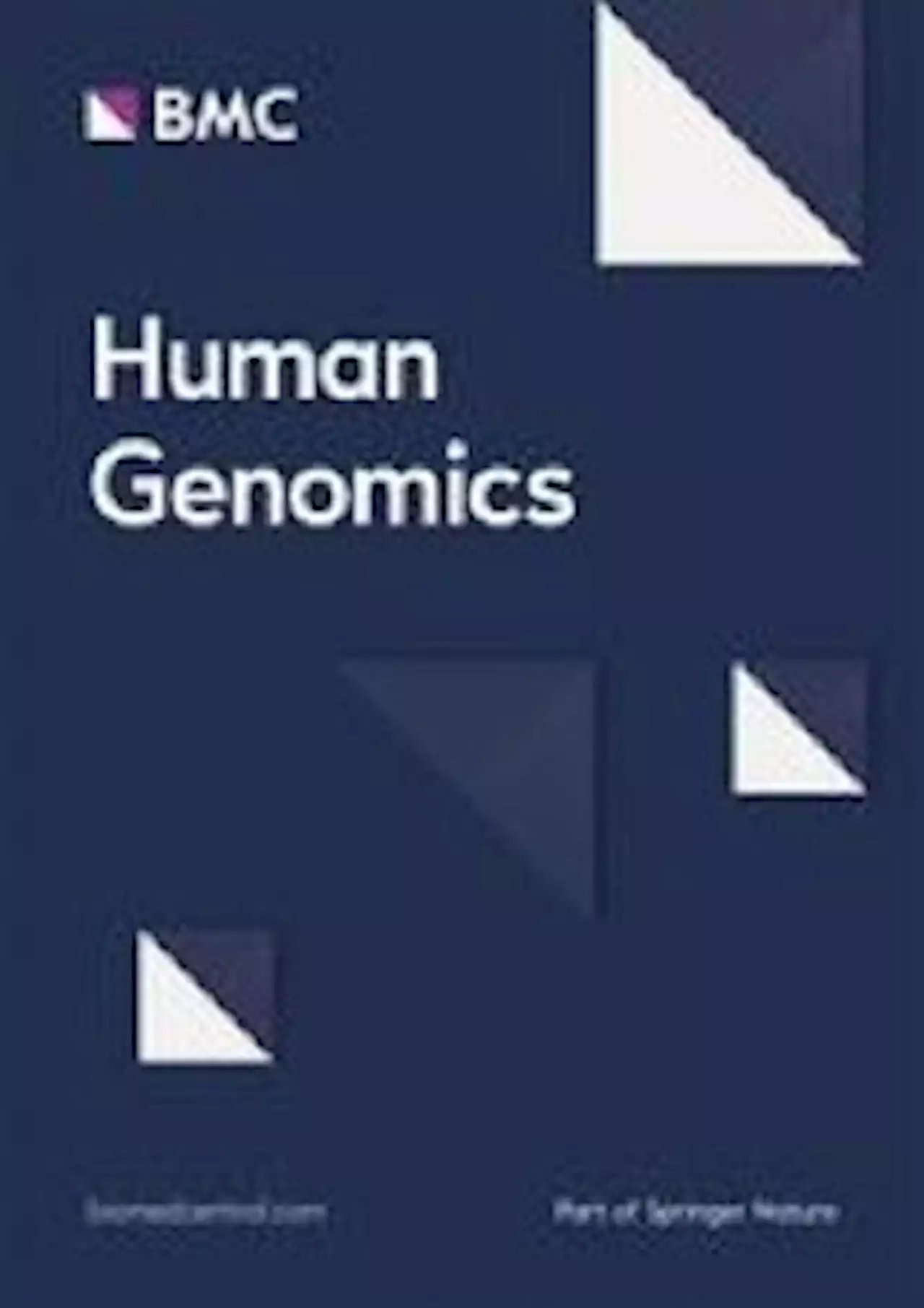Researchers demonstrate targeted epigenome editing in the promoter region of several genes using sgRNA/dCas9 complexes researchsquare Uni_Stuttgart CRISPR geneediting genetics epigenome epigenetics
By Susha Cheriyedath, M.Sc.Jul 17 2023Reviewed by Benedette Cuffari, M.Sc. In a recent study posted to the preprint server Research Square* while under review for publication in Epigenetics & Chromatin, researchers develop and characterize a highly specific EpiEditing system using catalytically inactivated Cas9 to achieve allele-specific deoxyribonucleic acid methylation .
Background Epigenomic editing involves the precise reprogramming of specific genomic regions using a tool called an EpiEditor. EpiEditor typically consists of components such as dCas9, DNMT3A/3L, and single guide ribonucleic acid . By introducing methylation to a particular locus, gene expression can be modulated.
For targets with single nucleotide polymorphisms in the protospacer adjacent motif region, a 20 nucleotide genomic sequence upstream of the PAM was selected as the sgRNA binding site. Comparatively, for targets with SNPs in the sgRNA seed region, a 20 nt sequence upstream of the nearest PAM containing the SNP was used.
DNA methylation analysis was also performed using Trim Galore!, PEAR, bwameth, and MethylDackel. RNA isolation and complementary DNA synthesis were followed by expression analysis using gene-specific primers and library generation with two-step polymerase chain reaction . Allelic expression ratios were determined for genes with SNPs in exons.
The experiments were categorized based on the location of SNP in sgRNA, including the seed region, position two of the PAM sequence, or PAM position three. SNPs in the PAM region leading to guanine to Y change, where Y represents cysteine or taurine , were preferred, as these changes exhibited the best discrimination of scFv-DNMT3A/3L-sfGFP, dCas9-10x SunTag-BFP, and sgRNA-DsRed constructs into HEK293 cells.
Heterozygous SNPs within the seed region of the sgRNA or PAM region of dCas9 were targeted to achieve allelic discrimination. The efficiency of targeted DNA methylation varied among the targets, with most successful targets reaching average DNA methylation of more than 50% at selected CpG sites.
United Kingdom Latest News, United Kingdom Headlines
Similar News:You can also read news stories similar to this one that we have collected from other news sources.
 Phenotypic variability to medication management: an update on fragile X syndrome - Human GenomicsThis review discusses the discovery, epidemiology, pathophysiology, genetic etiology, molecular diagnosis, and medication-based management of fragile X syndrome (FXS). It also highlights the syndrome’s variable expressivity and common comorbid and overlapping conditions. FXS is an X-linked dominant disorder associated with a wide spectrum of clinical features, including but not limited to intellectual disability, autism spectrum disorder, language deficits, macroorchidism, seizures, and anxiety. Its prevalence in the general population is approximately 1 in 5000–7000 men and 1 in 4000–6000 women worldwide. FXS is associated with the fragile X messenger ribonucleoprotein 1 (FMR1) gene located at locus Xq27.3 and encodes the fragile X messenger ribonucleoprotein (FMRP). Most individuals with FXS have an FMR1 allele with | 200 CGG repeats (full mutation) and hypermethylation of the CpG island proximal to the repeats, which silences the gene’s promoter. Some individuals have mosaicism in the size of the CGG repeats or in hypermethylation of the CpG island, both produce some FMRP and give rise to milder cognitive and behavioral deficits than in non-mosaic individuals with FXS. As in several monogenic disorders, modifier genes influence the penetrance of FMR1 mutations and FXS’s variable expressivity by regulating the pathophysiological mechanisms related to the syndrome’s behavioral features. Although there is no cure for FXS, prenatal molecular diagnostic testing is recommended to facilitate early diagnosis. Pharmacologic agents can reduce some behavioral features of FXS, and researchers are investigating whether gene editing can be used to demethylate the FMR1 promoter region to improve patient outcomes. Moreover, clustered regularly interspaced palindromic repeats (CRISPR)/Cas9 and developed nuclease defective Cas9 (dCas9) strategies have promised options of genome editing in gain-of-function mutations to rewrite new genetic information into a specified DNA site, are
Phenotypic variability to medication management: an update on fragile X syndrome - Human GenomicsThis review discusses the discovery, epidemiology, pathophysiology, genetic etiology, molecular diagnosis, and medication-based management of fragile X syndrome (FXS). It also highlights the syndrome’s variable expressivity and common comorbid and overlapping conditions. FXS is an X-linked dominant disorder associated with a wide spectrum of clinical features, including but not limited to intellectual disability, autism spectrum disorder, language deficits, macroorchidism, seizures, and anxiety. Its prevalence in the general population is approximately 1 in 5000–7000 men and 1 in 4000–6000 women worldwide. FXS is associated with the fragile X messenger ribonucleoprotein 1 (FMR1) gene located at locus Xq27.3 and encodes the fragile X messenger ribonucleoprotein (FMRP). Most individuals with FXS have an FMR1 allele with | 200 CGG repeats (full mutation) and hypermethylation of the CpG island proximal to the repeats, which silences the gene’s promoter. Some individuals have mosaicism in the size of the CGG repeats or in hypermethylation of the CpG island, both produce some FMRP and give rise to milder cognitive and behavioral deficits than in non-mosaic individuals with FXS. As in several monogenic disorders, modifier genes influence the penetrance of FMR1 mutations and FXS’s variable expressivity by regulating the pathophysiological mechanisms related to the syndrome’s behavioral features. Although there is no cure for FXS, prenatal molecular diagnostic testing is recommended to facilitate early diagnosis. Pharmacologic agents can reduce some behavioral features of FXS, and researchers are investigating whether gene editing can be used to demethylate the FMR1 promoter region to improve patient outcomes. Moreover, clustered regularly interspaced palindromic repeats (CRISPR)/Cas9 and developed nuclease defective Cas9 (dCas9) strategies have promised options of genome editing in gain-of-function mutations to rewrite new genetic information into a specified DNA site, are
Read more »
 Pregnant women urged to get booster jab after study shows babies at high risk of serious CovidPregnant women are being urged to get a Covid booster jab this autumn to protect their newborn child after a study found babies to be far more vulnerable to the virus than other childhood age groups 🔴 Exclusive from BawdenTom
Pregnant women urged to get booster jab after study shows babies at high risk of serious CovidPregnant women are being urged to get a Covid booster jab this autumn to protect their newborn child after a study found babies to be far more vulnerable to the virus than other childhood age groups 🔴 Exclusive from BawdenTom
Read more »
 My tonic creates a greener lawn using cheap kitchen staples - it's super easyA GARDENER has shared their recipe for a tonic that they claim will give you a green lawn quickly. They said that it’s super easy, effective, and all you need are cheap kitchen staples. Spenc…
My tonic creates a greener lawn using cheap kitchen staples - it's super easyA GARDENER has shared their recipe for a tonic that they claim will give you a green lawn quickly. They said that it’s super easy, effective, and all you need are cheap kitchen staples. Spenc…
Read more »
 Vaping concerns raised as children 'as young as 8' seen using devices'The health risks are still not fully known. The colours and flavours are attractive, which could lead to future smokers'
Vaping concerns raised as children 'as young as 8' seen using devices'The health risks are still not fully known. The colours and flavours are attractive, which could lead to future smokers'
Read more »
 How brands hope to tempt you with videos on labelsCompanies are using augmented reality labels on their products to share videos and animations.
How brands hope to tempt you with videos on labelsCompanies are using augmented reality labels on their products to share videos and animations.
Read more »
 Trudie's inspirational 'Round-up' recipe serves up a tasty dish using all the week's left-oversOur chef Trudie named her dish 'Round-up' as it's an absolute money-saver in that it minimises food waste while creating an extra meal. The number of combinations are endless which makes it all the more satisfying!
Trudie's inspirational 'Round-up' recipe serves up a tasty dish using all the week's left-oversOur chef Trudie named her dish 'Round-up' as it's an absolute money-saver in that it minimises food waste while creating an extra meal. The number of combinations are endless which makes it all the more satisfying!
Read more »
